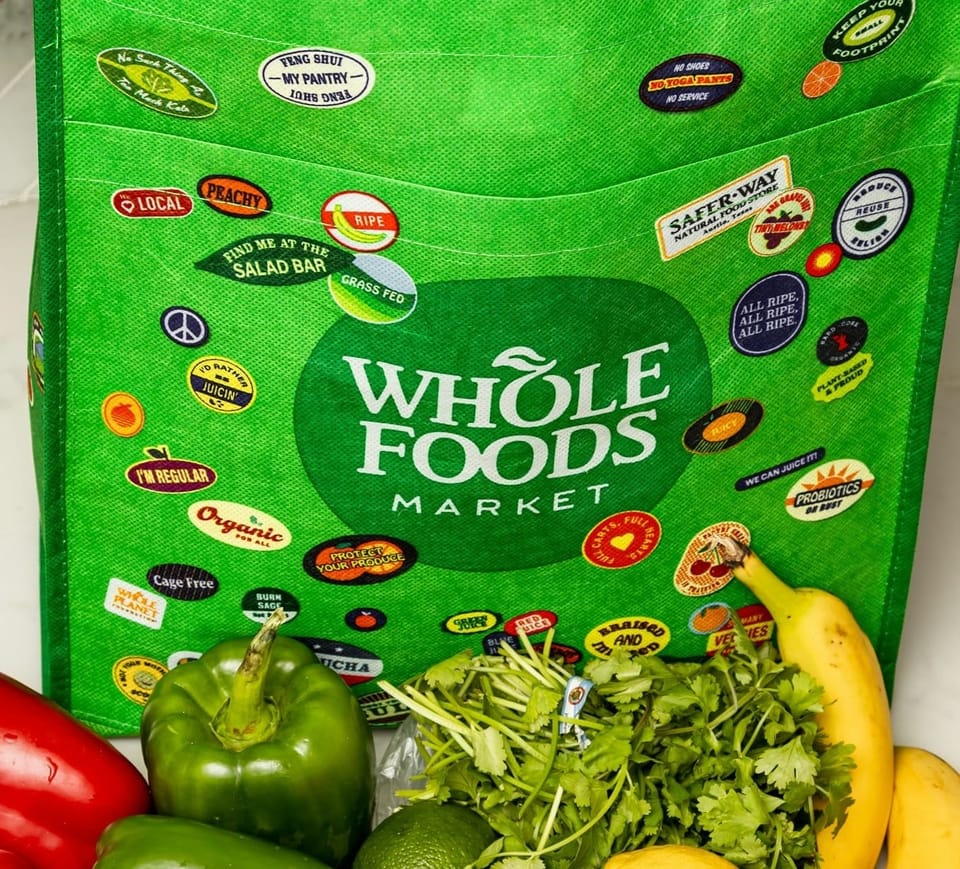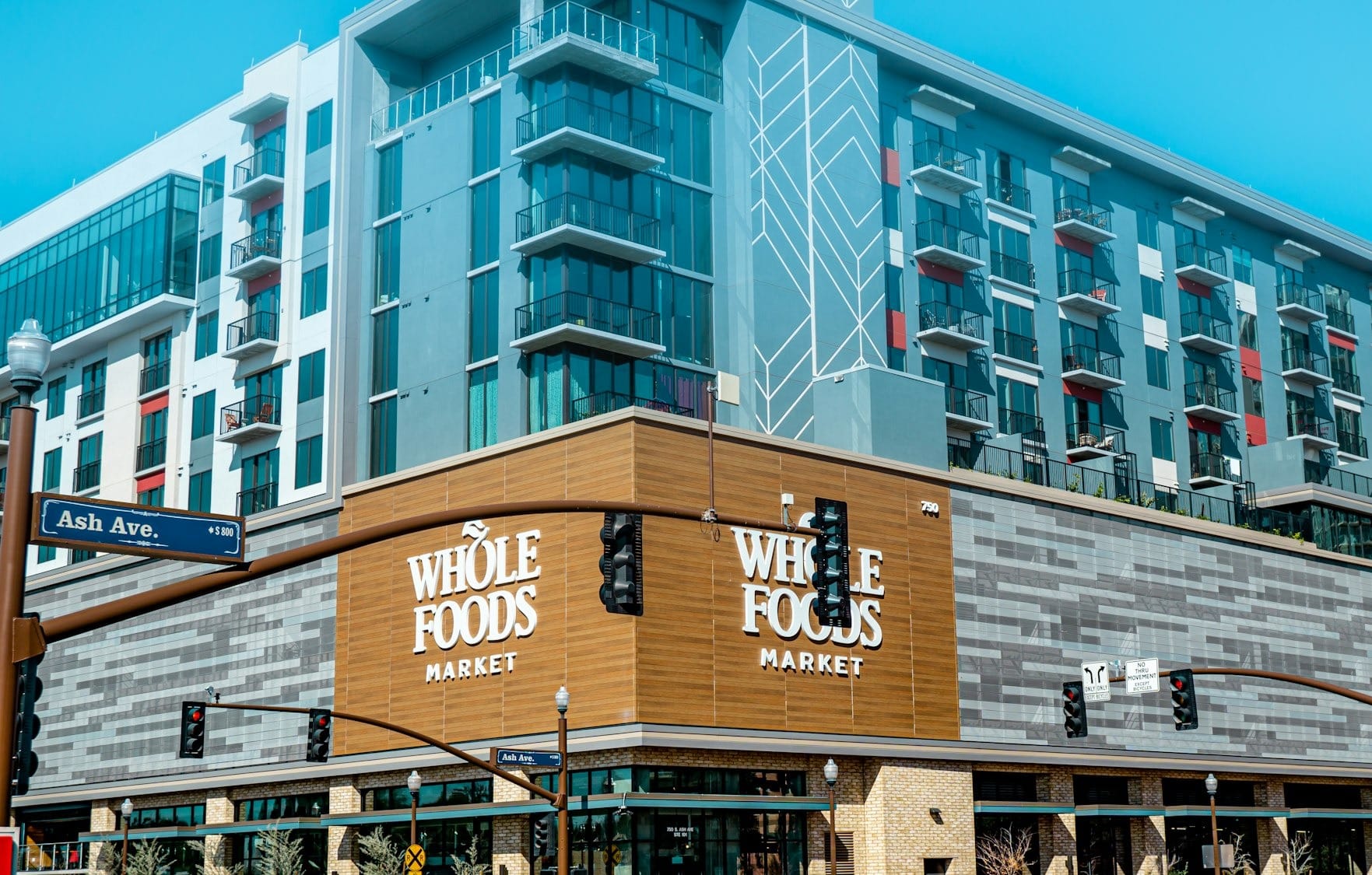Whole Foods Market: This "Premium" Grocery Store's Beginning

In the late 1970s, the concept of healthy, organic food was still a niche concern and relegated to fringe communities and health-conscious gurus. The mainstream grocery industry viewed it as impractical, if not outright unprofitable. But in Austin, Texas, a young college dropout named John Mackey saw a different future.
Mackey wasn’t a seasoned entrepreneur or a food industry veteran. He was just someone who believed in the power of natural foods. After working at a small vegetarian co-op and immersing himself in alternative food philosophies, Mackey decided to take the leap and open a store of his own. In 1978, he partnered with his then-girlfriend Renee Lawson to open a small natural foods store called Safer Way Natural Foods. With $45,000 in borrowed money and no formal business training, they moved into a 3,000-square-foot space inside an old Victorian house.
They lived upstairs, showered with a hose, and ran the store downstairs. It wasn’t glamorous, but it was authentic. Despite some early challenges (including getting evicted from their first apartment for storing food in it), the pair managed to build a small but loyal following. Their focus was simple: organic produce, bulk grains, and products free from artificial ingredients, preservatives, or additives. The store emphasized education/connection by employees walking customers through the aisles and explaining the health benefits of unfamiliar foods.
Still, the business was struggling. Running a small, independent store was tough, especially one that required educating its customer base as much as serving it. Mackey and Lawson realized that to truly make natural food accessible and sustainable as a business, they needed to go bigger—not just in square footage, but in concept.

In 1980, they joined forces with Craig Weller and Mark Skiles, owners of another small natural foods store in Austin, to create something new. That merger birthed the very first Whole Foods Market. Located in a 10,500-square-foot space—massive by the standards of health food stores at the time—the new store combined the offerings of both businesses under one roof: a full-service natural grocery with a butcher, seafood, produce, bakery, and dry goods all focused on natural and organic sourcing.
The store launched with 19 employees, and within its first year, it was a hit. Shoppers who had once driven all over town for various natural products could now find everything they needed in one place. The store was clean, friendly, and met all ones grocery needs. It made natural food feel less like a fringe lifestyle and more like a normal, healthy choice. The strategy was as much about changing perception as it was about distribution.
But just as the store began to thrive, of course something had to go wrong. In 1981, a massive flood hit Austin and entrenched the Whole Foods store. With no flood insurance and damaged equipment, inventory, and infrastructure, the future looked grim. But the community showed up. Customers and friends volunteered to help clean and rebuild. Local creditors extended grace. Mackey and the team reopened in just 28 days. That moment sealed the brand’s relationship with its customers.
From there, growth came steadily. Throughout the 1980s, Whole Foods began opening new locations across Texas and gradually expanded into other states. Unlike traditional grocery chains, which often grew through franchising or cookie-cutter replication, Whole Foods prioritized culture. Each store was slightly different, shaped by the community it served. This decentralized approach allowed them to maintain a local feel even as they scaled nationally.
In the 1990s, the company began acquiring smaller regional natural food chains, such as Bread & Circus in Massachusetts and Fresh Fields in the mid-Atlantic. These weren’t hostile takeovers—they were cultural integrations. Whole Foods preserved the spirit of each business while layering in their own systems and philosophies. This strategy allowed for rapid national expansion while still preserving the brand’s integrity and customer loyalty.
Acquisition
Acquisition can be a powerful strategy when executed with purpose. By acquiring competitors or complementary businesses, a company doesn’t just remove market threats—it instantly gains access to existing infrastructure, customer bases, and operational systems. For Whole Foods, this approach allowed them to expand quickly into new regions without the time and cost of building from scratch. Instead of starting new stores in unfamiliar markets, they acquired well-established local natural food chains and integrated them under the Whole Foods umbrella. This move gave them immediate scale and local credibility, showing how smart acquisitions can serve as both an offensive and defensive play in growing a brand efficiently.
A key to Whole Foods’ rise was how it turned organic food from a niche concept into a lifestyle and then into an expectation. While other grocery stores ignored the trend or tried to imitate it poorly, Whole Foods invested in education, transparency, and presentation. Stores were designed to be beautiful. Signage explained product sourcing. Staff were trained to be knowledgeable and enthusiastic. And over time, this investment paid off. Whole Foods began attracting not just hippies and health nuts, but suburban moms, urban professionals, and celebrities.

The brand's premium pricing strategy—sometimes mocked as “Whole Paycheck”—was intentional. It wasn’t just about margins; it was about signaling quality, trust, and alignment with values. Whole Foods built a business around the idea that customers would pay more for products they believed in. And for a long time, that bet worked.
As the organic movement went mainstream, traditional grocers like Kroger and Walmart began adding organic lines and undercutting Whole Foods on price. Meanwhile, newer, sleeker players like Trader Joe’s captured younger shoppers with lower prices and quirky branding.
By the early 2010s, Whole Foods’ growth began to plateau. The company was still profitable but was starting to lose its edge. The culture that had once differentiated it began to feel a bit stale in a crowded marketplace. Critics accused it of losing touch with its roots. And customers, always price-sensitive, started to explore other options.
In 2017, Whole Foods made a headline-grabbing move: it was acquired by Amazon for $13.7 billion. The acquisition sparked plenty of debate. Would the tech giant destroy what made Whole Foods special? Or could it help the brand modernize and regain its leadership?

Amazon wasted no time making changes. It slashed prices on select items, integrated Amazon Prime discounts, and rolled out home delivery through Prime Now. Behind the scenes, it streamlined operations and implemented new data systems. Some purists balked at the changes, but others welcomed them. And over time, it became clear that Amazon wasn’t trying to erase Whole Foods; it was trying to evolve it.
Today, Whole Foods operates more than 500 stores across North America and the UK. It remains a leader in organic and natural foods and continues to influence the broader grocery industry’s approach to health, sustainability, and transparency. The brand has stayed true to many of its founding principles—quality, integrity, and community—even as it's adapted to the digital age.
The story of Whole Foods is about more than groceries. It's about how values can be the foundation of a business, how local roots can scale nationally, and how evolution doesn't have to mean compromise. From a borrowed $45,000 and a hose-shower apartment to a global footprint and a billion-dollar acquisition, Whole Foods Market is a testament to what happens when you marry principle with persistence.
Works Cited
- Whole Foods Market. About Whole Foods Market: From Austin, Texas to Global. Whole Foods Market Company Info. Retrieved from company history page. reddit.com+1bonappetit.com+1wholefoodsmarket.com+1en.wikipedia.org+1
- Mackey, John. The Whole Story. John Mackey’s personal blog. Retrieved from his reflection on the flood and store recovery. wholefoodsmarket.com+7johnpmackey.com+7atxtoday.6amcity.com+7
- “How a community bank helped save Whole Foods from an early demise.” American Banker. Retrieved for details on City National Bank’s loan post-flood. americanbanker.com
- Gallo, Carmine. “This Forgotten Whole Foods Story Offers 1 Valuable Lesson For All Entrepreneurs.” Inc. (2015). Retrieved for flood aftermath and rebuilding. time.com+7inc.com+7oprah.com+7
- “Whole Foods Market (Wikipedia).” Retrieved for founding date, acquisition, store count, and key milestones. wholefoodsmarket.com+10en.wikipedia.org+10honors.libraries.psu.edu+10
- A CASE STUDY OF AMAZON'S ACQUISITION OF WHOLE FOODS (University of Oregon thesis). Retrieved for context on the June 2017 acquisition. forbes.com+12scholarsbank.uoregon.edu+12researchgate.net+12
- “Amazon Buys Whole Foods - Case - Faculty & Research.” Harvard Business School. Retrieved for strategic analysis of the deal. researchgate.net+2hbs.edu+2clausiuspress.com+2
- Banker, Steve. “How Amazon Changed Whole Foods.” Forbes (2019). Retrieved for post-acquisition integration and operational insights. forbes.com
- Smith, Evan. “John Mackey Built Healthy Whole Foods Empire.” Investor’s Business Daily (2016). Retrieved for flood background and business growth. johnpmackey.com+4investors.com+4oprah.com+4
- “Whole Foods Is Becoming Amazon’s Brick-and-Mortar Pricing Lab.” Harvard Business Review (2017). Retrieved for pricing strategy insights. scholarsbank.uoregon.edu+10hbr.org+10papersowl.com+10
- “This multichannel approach…” The New Yorker (“The Astonishing Transformation of Austin,” 2023). Retrieved for community integration and flood coverage. newyorker.com
- Bon Appétit. “‘We Were Just a Bunch of Young Hippies Selling Food to Other Hippies.’” (2018). Retrieved for founding anecdote. bonappetit.com
- Time. “How Whole Foods Got So Big.” (2017). Retrieved for acquisition spree and industry impact. businessinsider.com+3time.com+3vanityfair.com+3
- Business Insider. “A big shake‑up at Amazon finally brings Whole Foods into the fold.”
Jason Buechel’s leadership and organizational changes. Retrieved for current integration. en.wikipedia.org+2businessinsider.com+2businessinsider.com+2 - Business Insider. “Leaked memo reveals new leaders reorganizing Amazon’s grocery business and integrating Whole Foods.” Retrieved for current leadership update under Amazon. businessinsider.com+1businessinsider.com+1


